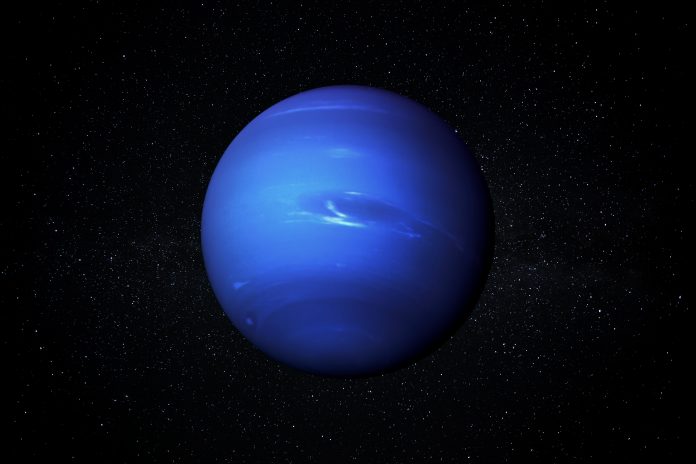Using the European Southern Observatory’s Very Large Telescope (ESO’s VLT), researchers reveal recent changes in the atmospheric temperature on Neptune
Over a 17-year period, the team have noticed a surprising drop in Neptune’s global temperatures followed by a dramatic warming at its south pole.
“This change was unexpected,” said Michael Roman, a postdoctoral research associate at the University of Leicester, UK, and lead author of the study published in The Planetary Science Journal.
“Since we have been observing Neptune during its early southern summer, we expected temperatures to be slowly growing warmer, not colder.”
“Since we have been observing Neptune during its early southern summer, we expected temperatures to be slowly growing warmer, not colder.”
100 thermal-infrared images capture new estimates of temperature
Much like Earth, Neptune experiences seasons as it orbits the Sun.
However, a season on Neptune lasts around 40 years, with one Neptune year lasting 165 Earth years. It has been summertime in Neptune’s southern hemisphere since 2005, and the astronomers were eager to see how temperatures were changing following the southern summer solstice.
Astronomers looked at nearly 100 thermal-infrared images of Neptune, captured over a 17-year period, to piece together overall trends in the planet’s temperature in greater detail than ever before.

Data reveals fluctuating temperature on Neptune and dramatic warming
The data collected showed that, despite the onset of southern summer, most of the planet had been gradually cooling over the last two decades, and that globally the average temperature of Neptune dropped by 8 °C between 2003 and 2018.
The team of astronomers were then surprised to discover that there had been a dramatic warming of Neptune’s south pole during the last two years of their observations, with temperatures rapidly rising 11 °C between 2018 and 2020.
Although Neptune’s warm polar vortex has been known for many years, such rapid polar warming has never been previously observed on the planet.
“Our data cover less than half of a Neptune season, so no one was expecting to see large and rapid changes,” says co-author Glenn Orton, senior research scientist at Caltech’s Jet Propulsion Laboratory (JPL) in the US.
Ground-based telescopes helped accuracy of temperature measurements
Using thermal camera that measure infrared light emitted from astronomical objects the team were able to consistently measure Neptune’s temperature and collate all existing images of Neptune gathered over the last two decades by ground-based telescopes. The team investigated infrared light emitted from a layer of Neptune’s atmosphere, called the stratosphere, allowing them to build up a picture of Neptune’s temperature and its variations during part of its southern summer.
“This type of study is only possible with sensitive infrared images from large telescopes like the VLT that can observe Neptune clearly, and these have only been available for the past 20 years or so,” said co-author Leigh Fletcher, a professor at the University of Leicester.
Around one third of all the images taken came from the VLT Imager and Spectrometer for mid-InfraRed (VISIR) instrument on ESO’s VLT in Chile’s Atacama Desert. Due to the ESO’s telescope mirror size and altitude, it has a very high resolution and data quality, offering the clearest images of Neptune.
The team also used data from NASA’s Spitzer Space Telescope and images taken with the Gemini South telescope in Chile, as well as with the Subaru Telescope, the Keck Telescope, and the Gemini North telescope, all in Hawai‘i.
What do these results mean for Neptune’s future?
Because Neptune’s temperature variations were so unexpected, the team of astronomers have not yet discovered what could have caused them.
They could be due to changes in Neptune’s stratospheric chemistry, or random weather patterns, or even the solar cycle. More observations will be needed over the coming years to explore the reasons for these fluctuations. Future ground-based telescopes like ESO’s Extremely Large Telescope (ELT) could observe temperature changes like these in greater detail, while the NASA/ESA/CSA James Webb Space Telescope will provide unprecedented new maps of the chemistry and temperature in Neptune’s atmosphere.
“I think Neptune is itself very intriguing to many of us because we still know so little about it,” said Roman. “This all points towards a more complicated picture of Neptune’s atmosphere and how it changes with time.”











